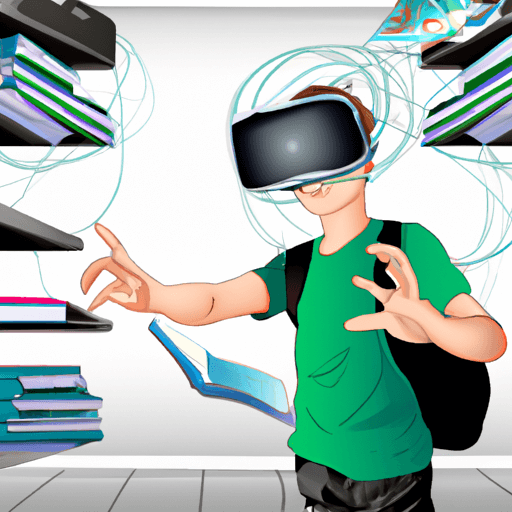Introduction
Virtual Reality (VR) technology, characterized by its immersive and interactive capabilities, is significantly reshaping and revolutionizing the modern educational system. This innovative technology disrupts traditional teaching methods, diversifies the learning process, and influences students' engagement levels, revealing both positive and potential negative impacts. This article aims to discuss VR's influence on education, evaluate potential challenges, and forecast its prospective scope in global education enhancement.
The Positive Impacts of VR on Education
Virtual Reality offers a dynamic, immersive learning environment, providing students with experiential, practical learning situations that enhance their understanding. It fosters greater engagement and interest among learners by transforming abstract concepts into tangible experiences. VR can simulate real-world scenarios recreating historical events or scientific processes, that provide students with holistic perspectives. It fosters visual learning, encouraging comprehension and retention of complex subjects.
The Potential Negative Impacts of VR on Education
Despite this boundless potential, integrating VR into the educational system also poses potential drawbacks. The key concern revolves around exposing children to extended periods of screen time, leading to physiological issues such as eye strain or cyber sickness. Additionally, the lack of human interaction can hinder social skills development in students.
Challenges and Obstacles
The implementation of VR technology in the classroom indeed presents certain challenges. The foremost among these are the high costs associated with procuring VR equipment and maintaining up-to-date software. Furthermore, the lack of technical skills among educators to operate VR tools, coupled with resistance from traditional teaching proponents, adds to the implementation challenges. Effective utilization of VR in education also necessitates confirming it meets all regulatory compliance, data security, and student privacy.
The Future of VR in Education
VR's future in education looks promising and transformative, allowing for a more engaging, practical, and immersive educational experience. The onward development of more affordable VR devices and growing digital literacy amongst educators and students will likely accelerate the adoption of VR in classrooms worldwide. Additionally, the number of ed-tech start-ups that are building VR content for education continues to rise. This signifies an aspiring trend that could revolutionize the global education sector, transcending geographical boundaries, and personalizing learning styles.
Conclusion
In conclusion, while VR's influence on modern education presents several advantages such as increased engagement and experiential learning, it also poses potential challenges concerning technological costs, implementation, and health concerns. Nonetheless, as technological growth surges and digital literacy improves, the prospect of VR integrated education looks hopeful. A thoughtful approach to incorporating VR technology can indeed create a powerful and effective educational platform that shapes and defines the future of learning.

















Comments
Leave a Comment